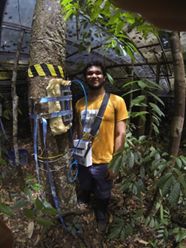About AMAZALERT
AMAZALERT examined how global and regional climate and land-use changes will impact Amazonian forests, agriculture, waters, and people; and how these impacts feed back onto climate.
“The AMAZALERT project has received funding from the European Union’s Seventh Framework Programme for research, technological development and demonstration under grant agreement no 282664, and was co-funded by many national agencies an institutes.”
CO2, temperature and drought: the three most uncertain natural drivers of amazon forest change
Of course, the major factor in Amazon change is deforestation, followed by the vulnerability of forests to fire.
But beyond these the direct effects of climate change on the vitality of the Amazon forests are strongly associated with projected changes in atmospheric CO2, temperature and rainfall. At the same time, it turns out that these factors are associated with major uncertainties in the models that are used to forecast forest change.
AMAZALERT addresses all these, and is also associated with projects that address them more specifically. The ORHIDEE and JULES models are being improved to resolve poor sensitivity of photosynthesis, respiration and allocation to drought, while intensive field work in the ESECAFLOR plots in the Caxiuana reserve (Pará state) supports this.
Several field campaigns on the temperature sensitivity of photosynthesis are now suggesting that this sensitivity is much less than assumed in most models. Finally, we know that the drastically fertilising effect of increasing CO2 in most models is likely too strong. Most models in AMAZALERT are now being improved to account for nutrient (N and P) limitation of this CO2 fertilisation, while a new initiative is being supported to build an AMAZON FACE (Free-Air CO2 Elevation) experiment, near Manaus. This new project is now entering its pilot phase. All in all, we expect in the short term to already be able to constrain models much better where it concerns drought, temperature and nutrients, while first experimental results on CO2 effects will become available in about five years’ time. |  Scientist operating equipment to measure stem respiration in the ESECAFLOR plot |


